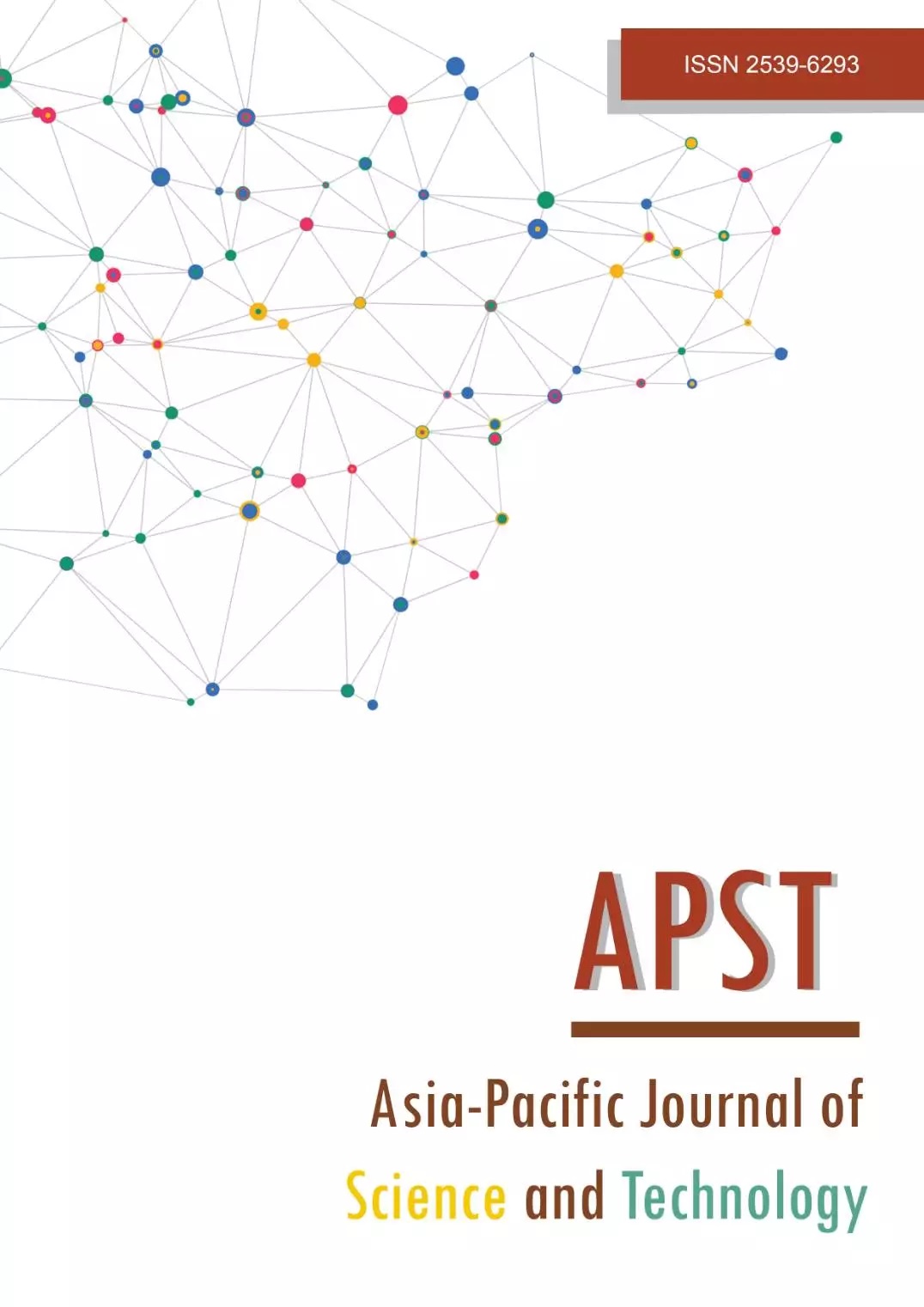Evaluation of transdermal patches made from Garcinia mangostana Linn. peel extract and natural rubber
Main Article Content
Abstract
Transdermal drug delivery systems (TDDS) are a popular research focus in pharmaceutical technology and a commonly produced pharmaceutical product worldwide. Utilizing these systems helps mitigate the disadvantages of other administration methods, such oral and parenteral. The aim of this study was to evaluate the properties of transdermal patches containing Garcinia mangostana Linn. peel extract with natural rubber content. Formula 1-4 (F1-4) transdermal patches with natural rubber were produced with hydroxypropyl methylcellulose (HPMC) and low protein rubber (LPR). The patches were examined to evaluate physicochemical properties and drug release characteristics. The casting evaporation method was utilized to produce transdermal patches that are smooth, dry, and white in color. pH values ranged between 5.8-6.2, and tensile strength values were 2.35 – 3.75 N/mm. The patches exhibited a thickness range of 0.47-0.55 mm. The weight values were in the range of 2.2-2.5g. and percent moisture and protein content ranged between 4.01-6.74 and 1.32-3.25 respectively. F-2 patches exhibited the highest drug entrapment capacity (71.02 %) and release efficiency (26.96% over 360 minutes). Therefore, the findings of the study suggest that F-2 patches can be developed as commercial alternative pharmaceutical products.
Article Details

This work is licensed under a Creative Commons Attribution-NonCommercial-NoDerivatives 4.0 International License.
References
Alkilani AZ, Donnelly RF. Beneath the Skin: A Review of Current Trends and Future Prospects of Transdermal Drug Delivery Systems. Pharmaceutics. 2022;14(6):1152.
Lehman N, Kalkornsurapranee E. Influence of Non-Rubber Components on the Properties of Unvulcanized Natural Rubber from Different Clones. Polymers. 2022;14(9):1759.
Xu L, Amin, S. Polymer Colloids for Cosmetics and Personal Care. Polymer Colloids. 2019;9:399.
Yusof NH, Ibrahim S, Tan KS, Ab Rahim R, Mohd Rasdi FR. Soluble protein-free natural rubber latex prepared using guanidine hydrochloride as a denaturant. J Rubber Res. 2023;26:99-109.
Rohman A, Windarsih A. Chemical composition and antioxidant studies of underutilized part of mangosteen (Garcinia mangostana L.) fruit. J Appl Pharm Sci. 2019;9(8):47-52.
Astuti KW, Putra P. S. A. Anti-inflammatory activity of mangosteen (Garcinia Mangostana Linn.) rind extract nanoemulgel and gel dosage forms. Biomed Pharmacol J. 2019;12(04):1767-1774.
Rizaldy D, Fidrianny I. Chemical compounds and pharmacological activities of mangosteen (Garcinia mangostana L.) Updated review. Biointerface Res Appl Chem. 2021;12(5):2503-2516.
Feng Z, Lin L. Xanthones, a promising anti-inflammatory scaffold: Structure, activity, and drug likeness analysis. Molecules. 2020;25(3):598.
Suksaeree J, Pichayakorn W. Improving the hydrophilic properties of deproteinized natural rubber latex films for lidocaine transdermal patches by starch blending. J Polym Environ. 2022;30:1574-1586.
Putri F, Sahumena M. A. Formulation and physical characterization of curcumin nanoparticle transdermal patch. Int J Appl Biol Pharm. 2019;11(6):217-221.
Monto. C, Suksaeree J. Herbal transdermal patches made from optimized polyvinyl alcohol blended film: Herbal extraction process, film properties, and in vitro study. J Drug Deliv Sci Technol. 2022;69:103170.
Singh A, Bali A. Formulation and characterization of transdermal patches for controlled delivery of duloxetine hydrochloride. J Anal Sci Technol. 2016;7:1-13.
Morais R, Marino C E. Skin interaction, permeation, and toxicity of silica nanoparticles: Challenges and recent therapeutic and cosmetic advances. Int J Pharm. 2022;614:121439.
Jacob L, Saju J. Formulation and Evaluation of Transdermal Patches of Selegiline. Asian J Pharm. 2022; 12(2):96-100.
Corrêa G D O P, Isaac V L B. In vitro evaluation of the cytotoxicity and eye irritation potential of preservatives widely used in cosmetics. RBCF. 2022;58:e20039.
Chauhan SB, Naved T, Parvez N. Effect of hydrophilic and hydrophobic polymer matrix on the transdermal drug delivery of ethinylestradiol and medroxyprogesterone acetate. Int J Appl Pharm. 2019;11:210-215.
Supapvanich C, De Vocht F. Evaluation of proteins in natural rubber latex gloves and pulmonary function amongst female nurses in two tertiary hospitals in southern, Thailand. Asian Pac J Allergy Immunol. 2022; 40(3):240-246.
Puyathorn N, Phaechamud T. Natural rubber-based pressure sensitive adhesive as a drug carrier. Mater. Today: Proc. 2023;75:9-14.
Latif M S, Alhashem Y N. Formulation and Evaluation of Hydrophilic Polymer Based Methotrexate Patches: In Vitro and In Vivo Characterization. Polymers, 2022;14(7):1310.
Schroeder I Z, Franke P, Schaefer U F, Lehr C M. Development and characterization of film forming polymeric solutions for skin drug delivery. Eur J Pharm Biopharm. 2007;65(1):111-121.


